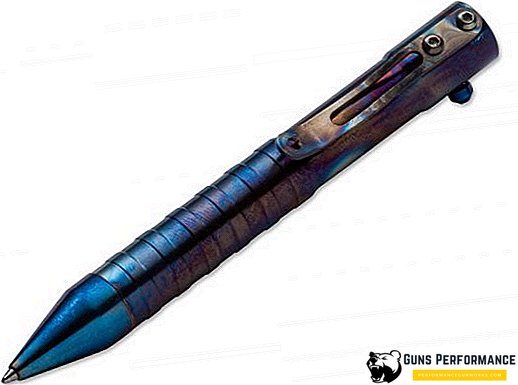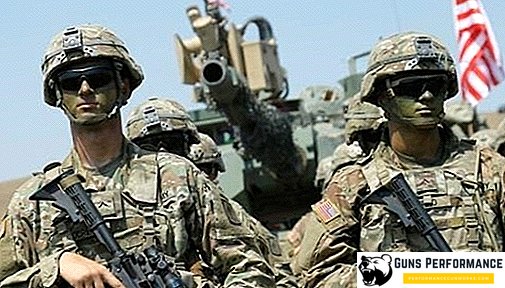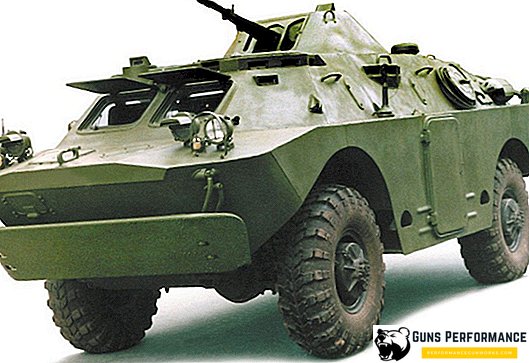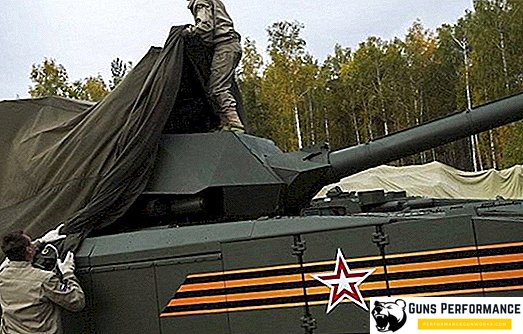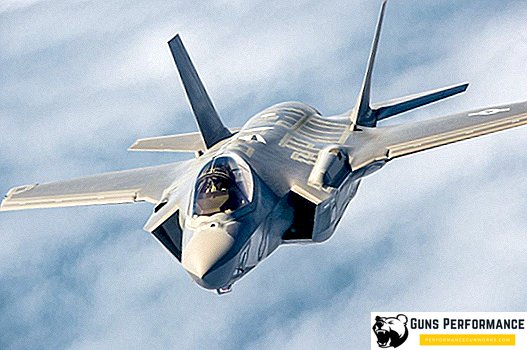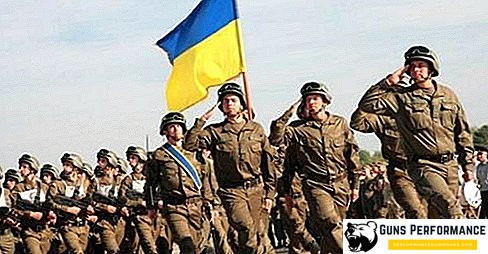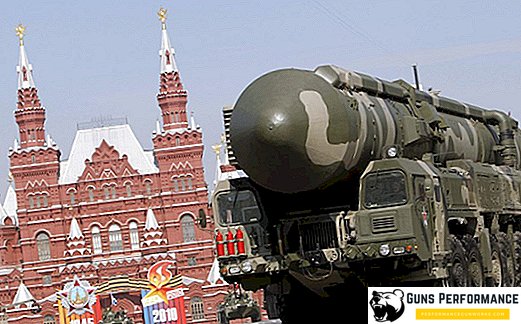
The second half of the twentieth century can be called the “rocket age”. Mankind has used rockets for a long time - but only in the middle of the last century, the development of technologies made it possible to begin their effective use, including as a tactical and strategic weapon.
Today, rockets deliver astronauts into orbit, take satellites into space, with their help we study distant planets, but much more widespread use of rocket technologies found in military affairs. It can be said that the emergence of effective missiles completely changed the tactics of warfare both on land, in the air, and at sea.
With the advent of nuclear weapons, missiles have become the most powerful tool of war, capable of destroying entire cities with millions of inhabitants. During the Cold War, mankind has been balancing for several decades on the verge of a global thermonuclear conflict that could put an end to our civilization.
Currently, missiles with nuclear warheads are the main deterrent that ensures the inadmissibility of conflict between the world's largest players. Russia has one of the most powerful nuclear arsenals in the world, the most important part of our strategic nuclear triad is the Strategic Missile Forces, or the Strategic Missile Forces.
The main weapons of the Strategic Missile Forces are intercontinental ballistic missiles with nuclear warheads that can hit a target anywhere in the world. The Strategic Missile Forces is a separate branch of the military that is subordinate to the General Staff of the Russian Armed Forces. Russian missile forces were formed on December 17, 1959. This date is the official Day of the Rocket Forces of Russia. In Balashikha (Moscow region) is the Military Academy of the Strategic Missile Forces.

In service with the Russian army there are only ballistic missiles. The Ground Forces of the Russian Armed Forces include the Rocket Forces and Artillery (MFA), which are the main means of enemy fire engagement during combined arms operations. MFAs have salvo-fired reactive systems (including high power), operational and tactical missile systems, whose missiles can be equipped with a nuclear warhead, as well as a wide range of artillery weapons.
"Land" missilemen have their professional holiday - November 19 is the Day of the Rocket Forces and Artillery of Russia.
History of creation
A man began to launch rockets into the sky a long time ago, almost immediately after the invention of gunpowder. There is information about the use of rockets for salutes and fireworks in ancient China (approximately from the 3rd century BC). The missiles tried to be used in military affairs — but because of their imperfections, they did not achieve much success at that time. Many prominent minds of the East and the West were engaged in rockets, but they were rather an exotic curiosity than an effective means of defeating the enemy.
In the 19th century, the Congrive missiles were used by the English army, which had been used for several decades. However, the accuracy of these missiles left much to be desired, so in the end they were ousted by the barrel artillery.
Interest in the development of rocket technology once again woke up after the end of the First World War. Design teams in many countries engaged in practical work in the field of jet propulsion. And the results were not long in coming. Before the beginning of the Second World War in the USSR, a BM-13 volley fire was created — the famous Katyusha, which later became one of the symbols of the Victory.

In Germany, the ingenious designer Werner von Braun, the creator of the first V-2 ballistic missile and the father of the American Apollo project, was involved in the development of new rocket engines.

During the war, several more samples of effective missile weapons appeared: a rocket launcher (the German Faustpatron and the American Bazooka), the first anti-tank guided missiles, anti-aircraft missiles, the V-1 cruise missile.
After the invention of nuclear weapons, the importance of rocket technology has increased many times: missiles have become the main carrier of nuclear weapons. And if the United States was initially able to use strategic aircraft deployed at air bases in Europe, Turkey and Japan for delivering nuclear strikes on Soviet territory, the Soviet Union could only rely on its strategic missiles if the conflict broke out.
The first Soviet ballistic missiles were created on the basis of German captured technologies, they had a relatively short range and could only perform operational tasks.
The first Soviet ICBM (range 8 thousand km) was the R-7 of the famous S. Korolev. For the first time she started in 1957. With the help of the R-7, the first artificial Earth satellite was launched into orbit. In December of the same year, units with long-range ballistic missiles were assigned to a separate branch of the armed forces, and brigades armed with tactical and operational-tactical missiles became part of the Ground Forces.

In the 1960s, work on the creation of new artillery and missile systems for the Ground Forces was somewhat slowed down, since it was believed that they would have little use in a global nuclear war. In 1963, the operation of the new RSZO BM-21 "Grad", which is in service with the Armed Forces of the Russian Federation today, began.

In the 60s-70s, the USSR began to deploy second-generation ICBMs, which were launched from high-security launching pits. By the beginning of the 70s, nuclear parity with the Americans was achieved at the cost of incredible efforts. In the same period, the first mobile launchers of ICBMs were created.

At the end of the 60s, the development of several self-propelled artillery systems began in the USSR, which later formed the so-called “flower” series: ACS Acacia, Gvozdika and Peony. They are in service with the Russian army today.
In the early 1970s, an agreement was signed between the USSR and the United States to limit the number of nuclear charges. After the signing of this document, the Soviet Union significantly exceeded the United States in the number of missiles and warheads, but the Americans had more advanced technologies, their missiles were more powerful and more accurate.
In the 1970s and 1980s, the Strategic Missile Forces received a third-generation ICBM with divided warheads, and the accuracy of the missiles increased significantly. In 1975, the famous "Satan" was adopted - the R-36M rocket, which for a long time was the main striking force of the Soviet Strategic Rocket Forces, and then the RF missile forces. In the same year, the tactical missile system "Tochka" was adopted by the Army.

At the end of the 80s, fourth-generation mobile and stationary complexes (Topol, RS-22, RS-20V) entered the armament of the rocket forces, and a new control system was introduced. In 1987, the RSZO Smerch, which was considered the most powerful in the world for many years, was accepted into service by the Army.
After the collapse of the USSR, all the ICBMs from the former Soviet republics were taken to the territory of Russia, and the launch shafts were destroyed. In 1996, the Strategic Missile Forces of the Russian Federation began to receive fifth-generation ICBMs (Topol-M) stationary bases. In 2009-2010, regiments armed with the new Topol-M mobile complex were introduced into the Strategic Missile Forces.
Today, the outdated ICBMs are being replaced with more modern Topol-M and Yars complexes, and the development of the Sarmat heavy fluid rocket continues.
In 2010, the US and Russia signed another treaty concerning the number of nuclear warheads and their carriers - SALT-3. According to this document, each country can have no more than 1,550 nuclear warheads and 770 carriers for them. Under the carriers are understood not only the ICBM, but also missile submarines and aircraft of strategic aviation.
Apparently, this agreement does not prohibit the manufacture of missiles with separable warheads, but it does not restrict the creation of new elements of the missile defense system, which the United States is currently actively engaged in.
Structure, composition and armament of the Strategic Missile Forces
Today, the Strategic Missile Forces include three armies: the 31st (Orenburg), the 27th Guards (Vladimir) and the 33rd Guards (Omsk), consisting of twelve missile divisions, as well as the Central Command Point and the Main Headquarters of the Rocket Forces.
In addition to military units, the Strategic Missile Forces include several landfills (Kapustin Yar, Sary-Shagan, Kamchatka), two educational institutions (the Academy in Balashikha and the Institute in Serpukhov), production facilities and bases for the storage and repair of equipment.
Currently, the Strategic Missile Forces of the RF Armed Forces are armed with 305 missile systems of five different types:
- UR-100NUTTH - 60 (320 warheads);
- R-36M2 (and its modifications) - 46 (460 warheads);
- Topol - 72 (72 warheads);
- Topol-M (including mine and mobile versions) - 78 (78 warheads);
- Yars - 49 (196 warheads).
All of the above complexes can carry 1166 nuclear charges.

The central command post (TsKP) of the Strategic Missile Forces is located in the village of Vlasikha (Moscow region), it is located in a bunker at a depth of 30 meters. In it continuous combat duty are four replaceable shifts. The communications equipment of the CCP allows you to maintain continuous communication with all other posts of rocket forces and military units, to receive information from them and respond to it in a timely manner.
Russian strategic nuclear forces use the Kazbek automated command and control system, its portable terminal is the so-called “black briefcase”, which the President of the Russian Federation resides on permanently, the Minister of Defense and the Chief of the General Staff have similar “cases”. Currently, work is underway to modernize ASBU, the fifth generation system will allow for the operational re-targeting of ICBMs, as well as to bring orders directly to each launcher.
The Strategic Missile Forces of the Russian Federation are equipped with a unique Perimeter system, which in the West has been called the “Dead Hand”. It allows you to strike back against the aggressor, even if all units of the Strategic Missile Forces are destroyed.
Currently, there is a rearmament of the Strategic Missile Forces with new Yars missiles with split warheads. Completed tests of more advanced modification of the "Yars" - R-26 "Boundary". Work is underway to create a new heavy Sarmat rocket, which should replace the outdated Soviet Voevody.

The development of the new Barguzin railroad missile system continues, but the timing of its tests is constantly being postponed.
Missile Forces and Artillery (MFA)

MFA is one of the arms of the Army. In addition to the Ground Forces, MFA is also a part of other structures: the coastal forces of the Russian Navy, the Airborne Forces, the border and internal troops of the Russian Federation.
MFA consists of artillery, missile and rocket brigades, rocket artillery regiments, large-capacity battalions, as well as subdivisions that make up the brigades of the Ground Forces.
The MTAA has a wide range of weapons at its disposal, which makes it possible to effectively carry out the tasks facing this branch of the military. Although the majority of these missile and artillery systems were developed in the Soviet Union, modern systems created in recent years also come to the troops.
Currently, the Russian army is armed with 48 tactical missile systems "Tochka-U", as well as 108 OTRK "Iskander". Both missiles can carry a nuclear warhead.

Barrel self-propelled artillery is represented mainly by samples created during the Soviet period: SAU "Gvozdika" (150 units), SAU "Acacia" (about 800 units), SAU "Hyacinth-S" (about 100 pieces), SAU "Pion" (more 300 units, most of them - in storage). Also worth mentioning is the 152-mm self-propelled gun "Msta" (450 units), which was modernized after the collapse of the USSR. The self-propelled artillery systems of Russian development include the Khosta self-propelled guns (50 units), which is an upgrade of the Gvozdika installation, as well as the Nona-SVK self-propelled mortar (30 machines).

The MTAA has the following models of towed barreled artillery: the gun-howitzers-mortar "Nona-K" (100 units), the howitzer D-30A (more than 4.5 thousand pcs., Most of them are in storage), the howitzer "Msta- B "(150 units). To combat the enemy’s armored vehicles, MTAA has more than 500 MT-12 “Rapier” anti-tank guns.
The multiple launch rocket systems are BM-21 Grad (550 cars), BM-27 Uragan (about 200 units) and MLRS BM-30 Smerch (100 units). In recent years, the BM-21 and BM-30 have been upgraded, based on them created MLRS "Tornado-G" and "Tornado-S". Improved "Grad" has already begun to enter the troops (about 20 cars), "Tornado-S" is still on trial. Work is also underway to upgrade the MLRS "Uragan".

The MTAA is armed with a large number of mortars of various types and calibers: an automatic mortar "Cornflower", an 82-mm mortar "Tray" (800 pieces), a mortar complex "Sani" (700 units), a self-propelled mortar "Tulip" (430 units .).
Further development of MTAs will go through the creation of holistic contours, which will include reconnaissance tools that enable them to find and hit targets in real time ("network-centric warfare"). Currently, much attention is paid to the development of new types of high-precision ammunition, an increase in the firing range, and an increase in its automation.

In 2014, the public was presented a new Russian ACS "Coalition-SV", which will come into service of combat units until 2020. This self-propelled installation has a greater range and accuracy of fire, increased rate of fire and the level of automation (compared to the ACS "Msta").




